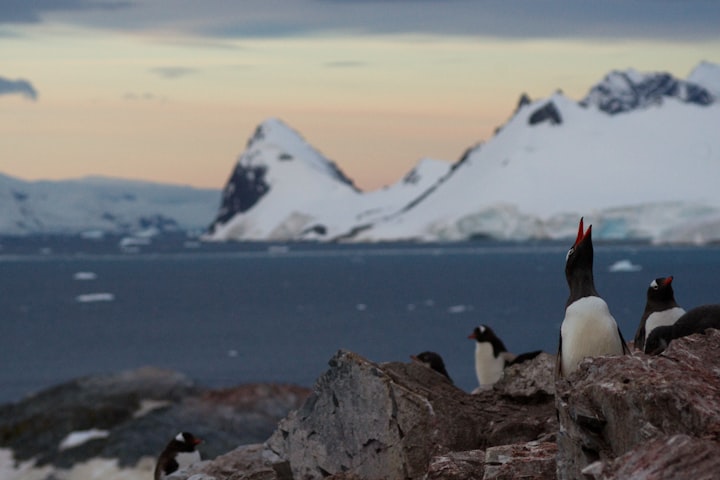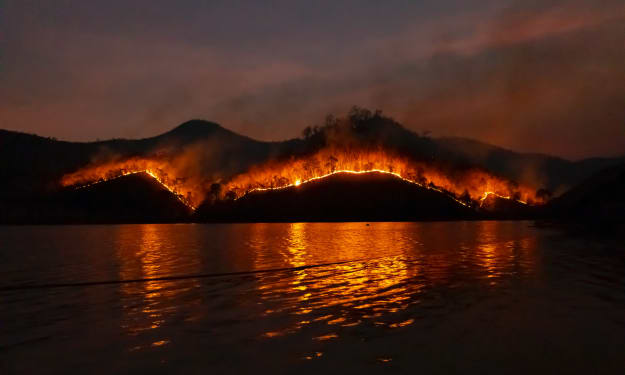Island Wildlife
survival of wildlife in the middle of sea

The kinds of organisms that live on and around an island depend on how that island was formed and where it is located. Continental islands have wildlife much like that of the continent they were once connected to. The critically endangered island fox, native to the six Channel Islands off southern California, is much like the grey fox of the North American mainland, for instance.
Isolated oceanic and coral islands, however, have plant and animal life that may have come from distant places. Organisms reach these islands by traveling long distances across the water.
Some plant seeds may travel by drifting in the ocean. The seeds of coconut palms, for instance, are encased in durable, buoyant shells that can float significant distances. The seeds of red mangrove trees often float to new locations along a coastline.
Other plant seeds travel to islands on the wind. Many lightweight seeds, such as fluffy thistle seeds and the spores of ferns, can drift long distances in air currents. Still other plant seeds may be transported to islands by birds—dirt stuck on their feet or feathers, or released in their droppings.
Birds, flying insects, and bats all reach islands by air. Many are blown long distances by storm winds.
Other creatures may ride to islands on floating masses of plants, branches, and soil, sometimes with trees still standing on them. These land rafts are called floating islands. Floating islands are usually torn from coasts and swept away during storms, volcano eruptions, earthquakes, and floods.
Floating islands can carry small animals hundreds of kilometers to new homes on islands. Snakes, turtles, insects, and rodents find shelter in tree branches or among plant leaves. Some of the best travelers are lizards, which can survive a long time with little freshwater.
People create their own artificial floating islands. The Uros people are native to the area surrounding Lake Titicaca, in Peru and Bolivia. The Uros live on 42 large floating islands constructed of reeds and earth. The islands can be anchored to the bottom of the lake using stone and rope.
Because plants and animals living on islands are isolated, they sometimes change to adapt to their surroundings. Adaptive radiation is a process in which many species develop to fill a variety of different roles, called niches, in the environment.
The most famous example of adaptive radiation is probably the evolution of the finch species of the Galapagos Islands. This group of birds is called “Darwin’s finches” because the scientist Charles Darwin was the first to study and document their adaptations. With no competition or threats from other species, the birds adapted to eat different foods. Their beaks reflect the different roles they play in the Galapagos Islands ecosystem: a finch with a large beak eats hard-shelled fruits and nuts, while a thin-beaked finch gets its nutrition from cactus flowers.
Lacking predators, some island creatures become enormous. This is called island gigantism. Also on the Galapagos Islands, giant tortoises developed from smaller ancestors over millions of years. Scientists believe the first tortoises probably came to the islands from South America on floating islands. Gradually, the animals grew larger in body size because there were few competitors for the plants they ate. Today, the tortoises may weigh as much as 250 kilograms (551 pounds).
Scalesias, plants related to sunflowers, gradually grew larger on the Galapagos Islands, too, because there were few insects or rodents that ate the flowers. Eventually, scalesia trees grew to be 6-9 meters (20-30 feet) tall. Scalesias are called the “Darwin’s finches of the plant world.”
The isolated populations on islands can lead to smaller, as well as larger, species. This process is called insular dwarfism. The critically endangered Sumatran tiger is only found on the island of Sumatra, Indonesia. It is significantly smaller than its Asian cousins, because it has less land to roam, smaller prey to feed on, and must move quickly in the jungle.
The isolation of many islands may protect some animals on them from predators and other dangers that exist on mainlands. Relatives of some animals long extinct in most parts of the world still survive on islands.
One of the most remarkable of all creatures was discovered in 1913 on the island of Komodo, Indonesia. Rumors of fantastic animals on Komodo had persisted over the years. When scientists arrived to investigate, they were astounded to see what looked like a dragon. The creature was a gigantic lizard nearly 3 meters (10 feet) long. Soon, more of these enormous reptiles were discovered, some even larger. Called Komodo dragons, they were found to be relatives to the Earth’s most ancient group of lizards. The isolation of the island of Komodo had preserved them.
People can accidentally or intentionally introduce organisms to island habitats. These organisms are called introduced species or exotic species. Ships delivering goods, for example, may unintentionally dump exotic algae into the water with their ballast. Ships carrying food cargo may accidentally carry tiny, hidden spiders or snakes. Island residents also bring pets with them. Some of these pets are released into the wild, either accidentally or on purpose.
About the Creator
Akash
Every additional piece of content you learn contributes to broadening your perspective and increase your expertise. The more you read, the more you learn, and the more equipped you become to navigate the complexities of the world around you
Enjoyed the story? Support the Creator.
Subscribe for free to receive all their stories in your feed. You could also pledge your support or give them a one-off tip, letting them know you appreciate their work.






Comments
There are no comments for this story
Be the first to respond and start the conversation.